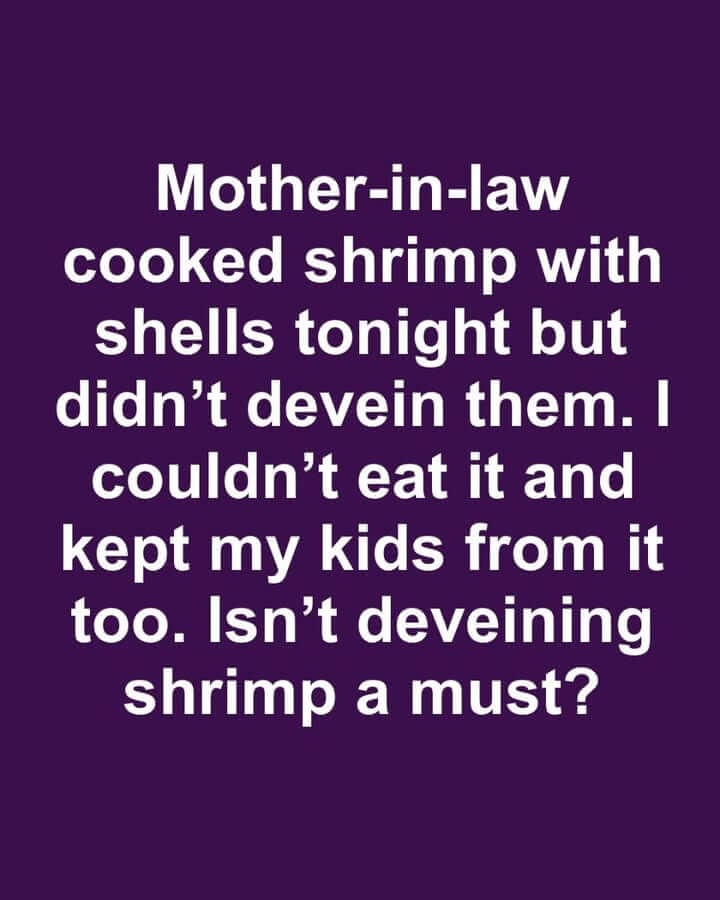When it comes to family meals, everyone brings their own traditions and preferences to the table. But what happens when those preferences clash? A recent dinner at my mother-in-law’s house turned into a quiet dilemma when she served shrimp cooked with the shells on — and without deveining them. That small detail led me to skip the dish altogether, and I decided my kids would too. It got me thinking: is deveining shrimp really necessary, or is it just a matter of personal choice?
Understanding Shrimp Preparation
Shrimp is one of the most popular seafoods worldwide, loved for its flavor and versatility. However, how it’s prepared can vary greatly depending on culture and personal preference. Some people cook shrimp with the shells on to lock in flavor, while others prefer to peel and devein them first. Deveining refers to removing the dark line along the shrimp’s back — the digestive tract — which often sparks debate among seafood lovers.
What Is Deveining and Why It Matters
Deveining shrimp involves making a small cut along its back and removing the dark vein. While eating it isn’t harmful, that vein can contain sand, grit, and undigested particles, which might affect the texture or appearance. Many people prefer deveined shrimp for cleanliness and a smoother eating experience. Others simply find the idea of eating a digestive tract unappealing, even if it’s harmless.
Is It Unsafe to Eat Undeveined Shrimp?
From a health standpoint, undeveined shrimp is safe to eat. The “vein” doesn’t pose any health risks, but it can occasionally carry bits of grit that make the shrimp less pleasant to eat. The choice often comes down to comfort level rather than safety. Some people won’t mind it at all, while others can’t get past the thought of what that dark line really is.
Cultural and Culinary Differences
How shrimp is prepared differs from one culture to another. In many Asian cuisines, shrimp are often cooked and served whole — shells, heads, and veins intact — because those parts add depth of flavor. Meanwhile, Western cooking typically favors deveined shrimp for a cleaner look and taste. Both methods have their merits, and appreciating those cultural differences can make dining experiences more open and enjoyable.
Personal Preferences and Clean Eating
Personal habits play a huge role in whether people choose to devein shrimp. Some focus on aesthetics and texture, while others care more about authenticity and tradition. For anyone mindful about food cleanliness or presentation, deveining offers peace of mind. But ultimately, it’s a matter of choice — not a strict culinary rule.
How to Devein Shrimp at Home
If you prefer deveined shrimp, the process is simple. Start by rinsing the shrimp under cold water. Using a small paring knife or a deveining tool, make a shallow slit along the back and lift out the dark vein. Rinse again to remove any residue. This quick step ensures your shrimp are clean and ready for cooking, enhancing both flavor and presentation.
Talking About Food Preferences with Family
Discussing food preferences can be tricky, especially when they touch on tradition. When addressing these differences, it helps to show appreciation for the cook’s effort before sharing your preferences. A respectful tone and clear communication can help avoid misunderstandings and keep family meals enjoyable for everyone.
Final Thoughts: Finding the Balance
At the end of the day, deveining shrimp isn’t a hard rule — it’s a personal decision influenced by culture, habit, and comfort. While it’s not essential for health reasons, many people find it improves texture and taste. The best approach is to strike a balance between respecting tradition and honoring personal preferences. After all, food is about connection and joy, not just preparation methods.
